
Candida Martinelli's Italophile Site

Main
Page This family-friendly site celebrates Italian culture for the enjoyment of children and
adults. Site-Overview
Limited edition Giclee prints printed with 12 inks
by digital Arts Studio, Atlanta, Georgia: 450 copies 15 artist's proofs Standard dimensions: 16x20" - 41x51c, on
Hahnemuehle watercolor paper - 155.00$ 24x30" - 61x76cm - on cotton
canvas, stretched - 295.00$ 32x41" - 81x102cm - on cotton
canvas, stretched - 395.00$ 16x20" can also be delivered
on canvas non-standard sized paintings
have different prices other dimensions available on
request. E-mail or phone for other
information and prices. Tel.: 700-899-4610. E-mail:
delamaria888@aol.com Languages:
English, French, German, Italian, Spanish.
Italian Renaissance villas and their gardens inspired
architecture and gardening around the western world, and continue to
inspire even today. But it's not just architects and garden designers
who are inspired. Artists continue to be inspired by the Argentinean-Italian-American Eduardo De la Maria is an
artist who is not only inspired, but determined, to fulfill his
dream of painting in oils all of Italy's most famous Renaissance
gardens and villas. In the Gallery on this page, you can see images of some of the
work he's already completed, along with some other examples of his
beautiful artwork. If you like what you see, you might consider purchasing a
print on museum quality watercolor paper, or on canvas to hang
in your home or office.
Eduardo has another inspiration in his life: cancer
research. Part of the profits from the sale of the
prints and canvases will go to a special cancer research project
Eduardo has been consumed with for at least the past decade. Building on his cousin's research in Uruguay and Argentina,
Eduardo is working with medical researchers in Mexico and the United
States to study the cancer treating properties of a plant
indigenous to Latin America. If all goes well, it may lead to new medicines for cancer
treatment, much as the Taxol discovery of a few years ago,
provided a new tool in fighting breast cancer. Eduardo hopes the research and trials will point the way to a
more humane form of cancer treatment than many of the treatments
currently in use today. Unfortunately for the patient, the
current regime is most often a combination of cut, drug, radiate,
and if the patient is still alive, then test for recurrence. Sadly, President Nixon's 'War on Cancer' is no where near
being won. So all my well wishes go to Eduardo and his
heroic efforts. His biography is below. Please enjoy his beautiful artwork!
Gallery of
Paintings by Eduardo De la Maria Mr. De la Maria is a fan of
classical music. He requested on option for gallery viewers to
listen to some music while viewing his work. Just click on
the button to start the MP3 file in your Media Player.
All Gallery Images: Copyright Eduardo De la Maria, all
rights reserved
Biography by Karen Lickay-Shrewsbury, Fine
Arts critic and long-time friend
Eduardo De la Maria was born in Buenos Aires, Argentina. His
artistic education began very early when one of his grandfathers, an
Architect by profession, started teaching him how to draw at the age
of 5.
But there are a number of other series in his program, on subjects
that over the years have awakened his interest as well, and on which
he is presently working. He is a very versatile artist able to
understand the essence and dynamics of any subject he may chose to
work on.
Visit my Riccardo Bianchi Art
Gallery Visit my Roberto
Lombardi Art Gallery
Gallery
of paintings by Eduardo De la Maria
![]()
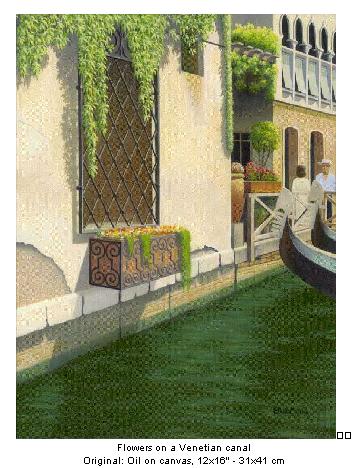
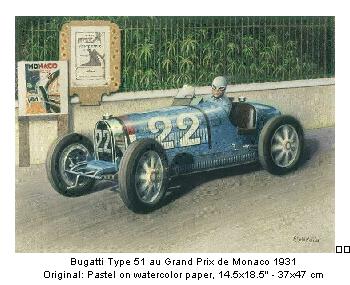
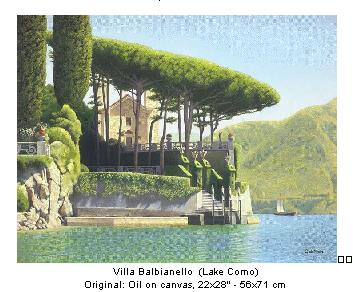
![]() Maria Callas singing Puccini's
'O babbino caro', best known from the film 'A Room With A View'
(The title is wrong on the file and
I'm still trying to figure out how to fix it, but the song is the
right one!)
Maria Callas singing Puccini's
'O babbino caro', best known from the film 'A Room With A View'
(The title is wrong on the file and
I'm still trying to figure out how to fix it, but the song is the
right one!)![]() Pietro Mascagni's evocative
musical Intermezzo from his opera 'Cavalleria Rusticana'
Pietro Mascagni's evocative
musical Intermezzo from his opera 'Cavalleria Rusticana' 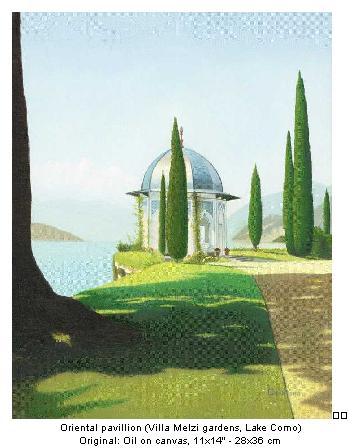
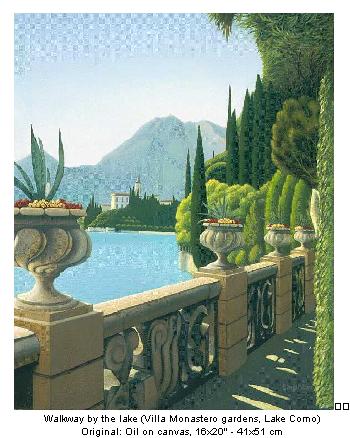
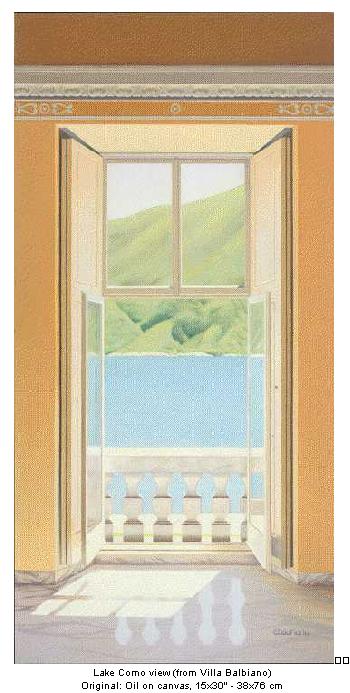
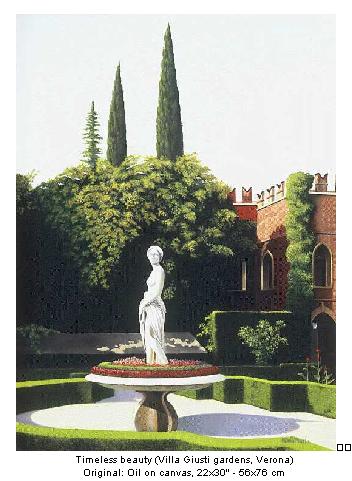

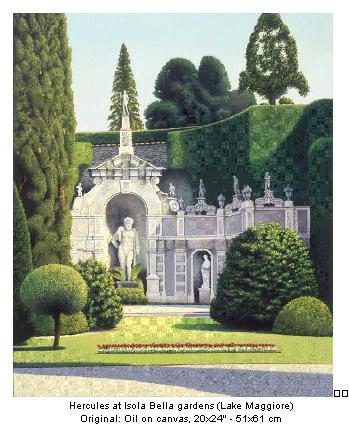

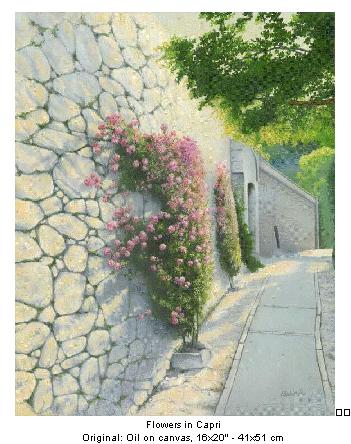
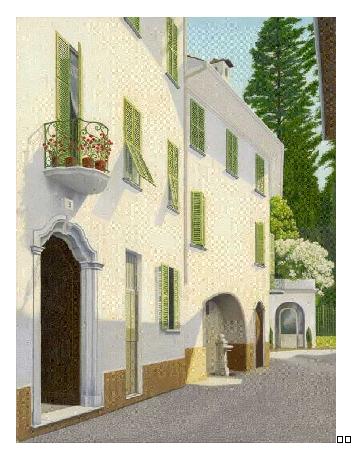
![]()

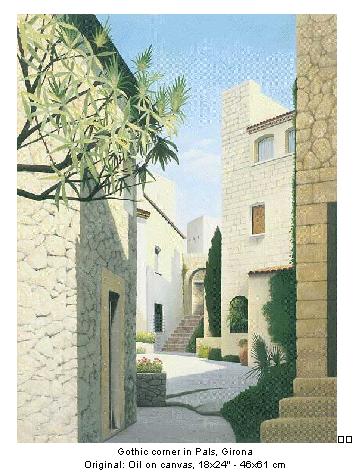
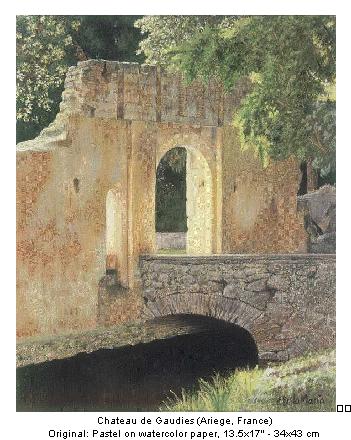
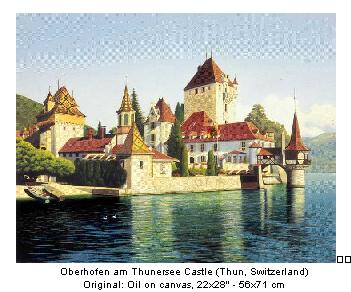
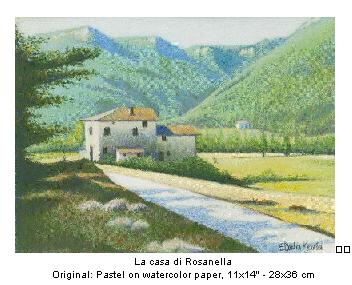
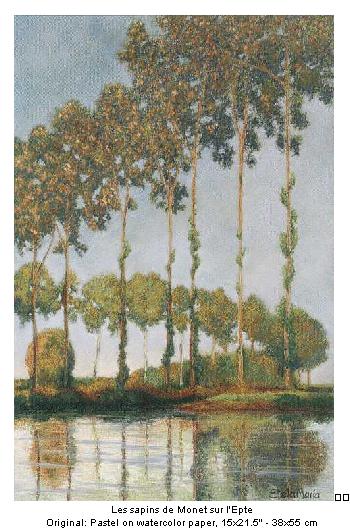
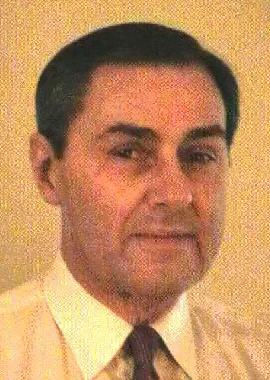
There were Architects in both branches of the family and a seemingly
inherited genetic ability for drawing and painting. But with the
exception of his brother Alfredo - who lives in Buenos Aires and
is an artist of international renown - none of the family
members ever made of this form of art a profession. (ed.
Alfredo De la Maria's website)
Eduardo carried on with the family tradition by studying
Architecture at the reputable Faculty of Architecture in
Montevideo, Uruguay, and over that period he also attended the
Academy of Fine Arts where in a couple of occasions got excellency
awards.
After graduating he moved to Barcelona, Spain, where for some
time he worked as an Architect for a well-established construction
company. Until he realized that his creative nature would not be
satisfied in an environment where economic considerations
constrained artistic expression and creativity. Following some
fortuitous events, Eduardo established a fine jewelry
manufacturing company, in which he was then able to freely
unleash his creative spirit in the design of collections in which he
would make effective use of his technical education and knowledge of
the artistic inheritance of different cultures. His approach was
successful and appreciated from the main European capitals to the
Far East and the company developed nicely.
While living in Europe, Eduardo traveled extensively throughout
the world. Frequently in Italy for professional reasons
and able to fluently speak its language, he got to know the country
well and fell in love with its beauty, culture, idiosyncrasy and
artistic inheritance. In particular with the spirit of the
Italian Renaissance period, which had extraordinary expression
in the princely residences and gardens built all over the
country. Not foreign to this enchantment was probably also his
Italian ascendance, as the name De la Maria is originally from
the Veneto region.

At some point he started feeling the urge to put on canvas what his
eyes were admiring during his trips, but didn't think of making of
this art a profession. He started painting, dedicating his
work to friends and family, and periodically did some informal
presentations for a closed circle of social and business
acquaintances.
The change of political regime in Spain in the mid 70's generated an
intense economic and social chaos that forced many entrepreneurs to
close doors and leave the country. Since the rest of Europe was then
also afflicted by economic and political problems, Eduardo decided
to move to the United States.
He settled in Atlanta in 1980, where for many years he kept
himself busy with various entrepreneurial activities of
commercial nature. Until at some point in time Eduardo went to
Buenos Aires to spend some time with
his brother, who was already getting growing recognition and
encouraged him to start painting professionally. He took
profit of the occasion to assimilate some of Alfredo's technique and
have his guidance and criticism for a while. At that time he also
started developing in his mind a conscious notion of what his
paintings should eventually be:
windows
through which the viewer may look through and move into another time
and space, maybe to escape the sometimes dull realities of daily
existence. Objects to be kept and cherished for life.
Enthused with the feeling that he had defined a basic element to
produce something of everlasting value, he started selecting
the subjects of his paintings and figuring out how he would execute
them to achieve the results he had in mind. He decided that his work
was going to be organized in series dealing with different
subjects and, going back to his traveling experiences, started
working on the first to be produced, "Italian Villas and Gardens",
mostly dedicated to the works of the Italian Renaissance period.

Eduardo depicts the subjects as they are in reality. Beside
the fact that he wants his artwork to be of documentary value,
he wants the viewer to experience the joy of life that he
believes is at the basis of every human creation where beauty
is the final scope, that can reach its maximum intensity under
intense sunlight and clear skies.
In his own words: "This is my own experience since I was a child. I
could feel very happy just by observing the coloring effects of
intense sunlight and the blues of the sky. And that feeling
could be still enhanced to a level of elation when the ambient
temperature and humidity reached a point where an almost
invisible haze was pre-sent as a result. Since I know now that
my reaction to those elements was to a large extent the result of
biochemical processes, I reached the conclusion that if I was able
to make an accurate representation of them through color, I might be
able to convey those sensations to whoever may look at my
paintings."
Therefore, Eduardo strives to capture the effects of sunlight and
clear skies together with luminous shades. He doesn't hesitate
to spend countless hours to get the precise tonalities that will
define the atmospheric conditions he wants to be present, that may
be different for different regions.
He believes that representing a certain subject more or less
accurately is not enough. Other intangible elements must also be
represented, sometimes at subliminal level, to make a painting alive
even in the absence of human life representation.
He wants the viewer to feel, when looking at his paintings, the
desire to be at the place depicted, to move into it. He wants
the viewer to be fascinated with the beauty and reality of the
subject, and to compel his or her imagination to wander,
in whichever way it may. He wants his paintings to be an
instrument for bringing life to a living space, but not just by
contributing a note of color. If all of this is achieved, as many
spontaneously say is the case, the purpose has been fulfilled and
his work may be timeless.
Through his paintings Eduardo wants to share some of his life
experiences with others, to document the beauty of this world and to
thank God for having given us such a present and the ability to
enjoy it.
When one knows him, one may say that his soul is in his paintings.